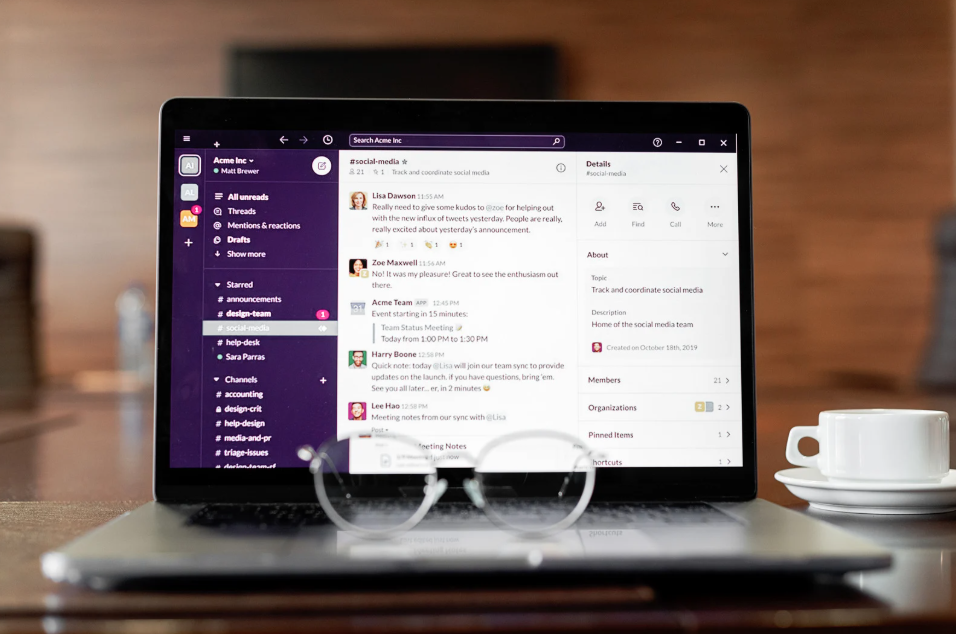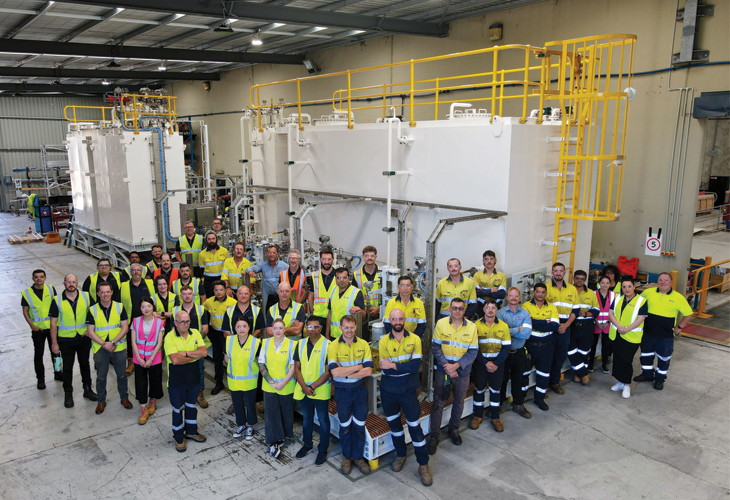
In today’s fast-paced digital world, low-code app development is becoming a game-changer for small businesses. It offers a way to build custom applications without needing extensive coding skills, empowering teams to solve problems quickly and affordably. In fact, low-code adoption is skyrocketing – by 2025, 70% of new business applications will use low-code or no-code technologies (up from just 20% in 2020). Why the buzz? Because low-code lets you create the tools you need faster, often cutting development time by up to 90% compared to traditional coding. This guide will walk you through what low-code means, why it’s valuable for small businesses, real-world examples (from construction to entertainment), and how you can get started on your own low-code journey.
Low-code development means building applications with minimal hand-coding. Instead of writing complex programming syntax, you use visual interfaces with drag-and-drop components, templates, and easy integrations. It’s like assembling Lego blocks: you define what you want, and the platform handles a lot of the heavy lifting. This approach is designed so that even non-developers – often called “citizen developers” – can create apps or workflows with a bit of training.

Low-code platforms typically provide elements for UI design, database management, and logic (through visual workflows or simple scripting). For a small business, this means you don’t need to hire a big development team to digitize a process. You can create a working app or automation in days or weeks, not months. And if you do have developers, low-code can free them up from trivial tasks to focus on more complex projects.
How does low-code differ from no-code? They’re closely related. No-code tools target users with absolutely no coding, offering only configuration; low-code may allow a mix of visual design and light code for flexibility. Both aim to simplify and speed up development. The key point is that low-code reduces the amount of programming needed to bring an idea to life.
Why Should Small Businesses Embrace Low-Code?

Overall, low-code development levels the playing field, letting small businesses innovate like big companies. It’s no wonder that more than 65% of all application development activity is projected to be low-code by 2024, it delivers results.
Popular Low-Code Tools and Platforms in 2025 (Power Apps, Django & More)
When diving into low-code, it helps to know the landscape of tools available. Different platforms have different strengths. Here are some of the popular low-code options, including ones our team frequently works with:
Bottom line: there’s no one-size-fits-all. The good news is you have options. Platforms like Power Apps, Airtable, Notion, AppSheet are excellent for quickly solving common business challenges without coding. If you outgrow their capabilities, frameworks like Django (or Flask, Ruby on Rails, etc.) allow you to build exactly what you need, relatively quickly, with professional help. The goal is to choose a solution that matches your team’s skill level and your app requirements.
Case Study: Questas Group Modernizes Operations (Manufacturing)
Let’s look at a real case of how custom app development (using a rapid approach) transformed a business. Questas Group, a leader in manufacturing and engineering services in Australia, faced a common challenge – many of its critical workflows were manual and paper-based. Job tracking, inspections, approvals, reporting… all relied on hand-written forms and Excel sheets. This led to delays, data entry errors, and a lack of real-time visibility on the factory floor. They needed to digitize and streamline these processes, but a generic off-the-shelf software wouldn’t fit their specific operational needs.

Questas partnered with our team at Inlight IT to build a custom digital platform to replace those clunky workflows. Instead of writing a system from scratch in pure code over many months, we delivered a solution rapidly by leveraging high-level frameworks and an agile approach. The result was “Digitalize” – an internal web application tailored exactly to Questas’ manufacturing processes.
For a small or medium business, the Questas story shows that you don’t have to settle for inefficient processes just because you fear software development is too costly or slow. With approaches like low-code and rapid development frameworks, you can get a custom solution quickly that delivers real ROI. Sometimes that’s via a platform like Power Apps; other times, like for Questas, a custom app built with expert help is the way to go. The common theme is leveraging the right tools and expertise to digitize intelligently.
(Note: Technologies used for Questas’ solution included Django, PostgreSQL, AWS cloud hosting, and React for the UI, illustrating that modern app development can blend multiple technologies to get the best result.)
How to Get Started with Low-Code (and Bring Your Ideas to Life)
Ready to dip your toes into low-code development? The great thing is that getting started doesn’t require a huge commitment or technical overhaul. Here’s a simple roadmap for small businesses eager to leverage low-code, along with some tips from our team at Inlight IT:
Identify a High-Impact Use Case: Look around your business for the most painful manual process or a spreadsheet that’s doing overtime. It could be anything, managing leads in Excel, tracking customer orders on paper, scheduling staff via endless email threads. Pick one process that, if improved, would save you time or money (or both!). Starting with a clear, impactful use case ensures your first low-code project delivers visible value.
Choose the Right Platform: Based on your use case and what tools you already use, select a low-code platform to try. If you’re heavy on Microsoft 365, Power Apps is a natural choice (it’ll integrate with your Outlook/SharePoint data smoothly). If you use Google Workspace, maybe AppSheet. For a very database-like app, Airtable could work. Most of these platforms have free tiers or trials – sign up and explore their templates and examples. Tip: Many platforms offer pre-built templates (for example, Power Apps has templates for expense reporting, issue trackers, etc.). Use a template as a starting point if it matches your need.
Build a Prototype in Days: Don’t aim for perfection on your first go. Try assembling a prototype of your app in a week or less. Drag in some fields, make a form, connect it to some sample data. Low-code is all about iterating quickly. You can even involve the end users (the employees who will use it) early – show them the prototype, get feedback, and refine. The beauty is you can adjust the app on the fly with minimal effort.
Keep It Simple and Focused: Especially for your first low-code app, avoid the temptation to solve every problem at once. It’s better to have a small app that does one thing well (and is adopted by your team) than a monstrous app that tries to do everything and ends up unused. For example, create a basic ticket submission app for IT requests before tackling a full helpdesk system. Success with one focused app will build confidence and skills for the next.
Educate and Empower Your Team: Low-code is as much a people initiative as a tech one. Encourage interested team members to learn the platform. There are plenty of online tutorials for every major tool. Maybe hold a fun “app building hour” where someone shows how they built a simple app. When people see how quickly they can create something useful, it sparks ideas. Cultivating a couple of in-house citizen developers is a huge asset – they become your go-to low-code champions.
Mind Governance and Security: As you roll out apps, ensure you have some basic oversight. Low-code apps still handle data, so you want to set up proper permissions and data backups. If using Power Apps, for instance, your admin can set environment controls. Start small, but keep IT in the loop if you have an IT person, to align with security best practices. Most platforms have guides on how to implement governance without stifling innovation.
Consider Expert Help for Complex Projects: If you hit a wall, say you need an integration that’s not straightforward, or you want a more polished app than you can produce, don’t hesitate to reach out for help. Sometimes a few hours of a pro developer’s time can save you days of struggle or make your app much better. And if you discover a mission-critical need that goes beyond what low-code can do out-of-the-box, a professional team (like ours) can help build a hybrid solution (combining low-code with custom code) or even a fully custom app when justified. The key is to use experts strategically, to augment your low-code efforts where it makes sense.
Inlight IT’s Low-Code Launchpad: As a shameless plug (we did write this guide, after all!), we offer a service exactly for helping businesses get started with low-code quickly. Our Low-Code Launchpad is designed to take you from idea to working app in a matter of weeks, not months. We work with you to map out your process, choose the best platform (be it Microsoft Power Platform, Airtable, Notion, or a custom build), and we do the heavy lifting to build the core of the app fast. The goal is to deliver a scalable, secure solution that you own, with training for your team to maintain or tweak it. Whether you need to digitize paper forms, automate an approval workflow, or create a simple database app, our experts can likely build it quicker and more cost-effectively than a traditional dev cycle, all while tailoring it to how your business actually runs. If you’re unsure where to start, feel free to reach out to us, we love brainstorming solutions that blend practicality with innovation.
You can read more about this service here.
Low-code app development is leveling the playing field for small businesses. It lets you harness the power of software to streamline operations, wow your customers, and empower your employees – without needing a full-fledged development department. From a construction company improving site safety, to an entertainment business coordinating events, to a manufacturer like Questas reinventing its workflows, the stories show that low-code isn’t a tech fad, but a practical tool for transformation. And importantly, it’s accessible, if you have a challenge in your business, you can likely start solving it today with a low-code approach.
As you venture into low-code, keep the mindset of experimentation and continuous improvement. Your first app might be simple, but it’s a first step toward a more agile, digitized business. Iterate, listen to feedback, and soon that simple app could evolve into a critical system that saves you time and money. The sooner you start, the sooner you’ll uncover new opportunities to automate and innovate.
Embracing low-code development can boost your business’s efficiency and agility. Whether you leverage popular platforms like Microsoft Power Apps or opt for custom rapid development with frameworks like Django, the key is to get started and iterate. The low-code revolution is here, and it’s an ideal time for small businesses to climb aboard, with the right guide and partners, you can build powerful apps with surprising speed. Here’s to coding less and doing more!
Ready to supercharge your business?
We invite you to book a discovery call with our team or reach out to start planning your next app. With Inlight IT by your side, you’ll be able to accelerate your digital transformation and expansion confidently, keeping your stores connected, your data secure, and your costs under control every step of the way.
Submit a form below or feel free to read more on our Low-code Launchpad page.


